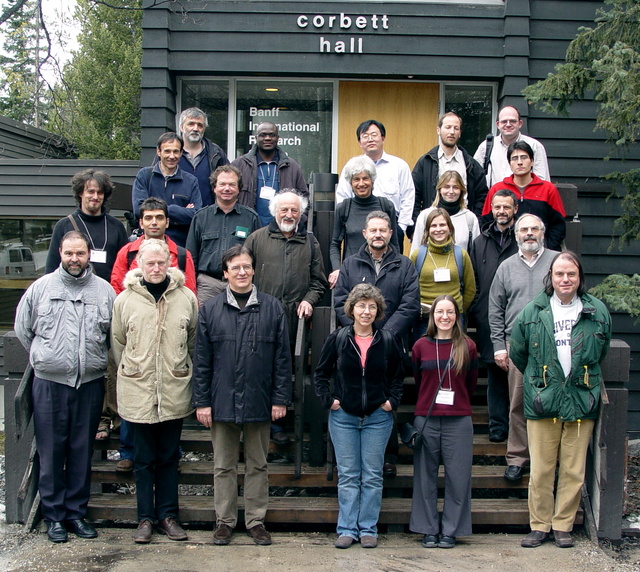Mathematical developments around Hilbert's 16th problem (07w5021)
Organizers
Christiane Rousseau (Université de Montréal)
Description
In his famous lecture of the 1900 International Congress of Mathematicians, David Hilbert stated a list of 23 problems with deep significance for the advance of mathematical science. There has been intensive research on these problems throughout the 20th century. Hilbert’s 16th problem called “Problem of the topology of algebraic curves and surfaces” is one of the few problems which are still completely open. This problem has two parts. The first part asks for the relative positions of closed ovals of an algebraic curve given by the set of points which are solutions of a polynomial equation P(x,y) = 0. Even if this is a purely algebraic problem, there has been little progress on the general case, while there is progress for small values of the degree of the polynomial P (degree less or equal to 7).
The workshop taking place in Banff on March 12-16, 2007 is focusing on the second part of the problem which is a problem in differential equations, but with the differential equations given by polynomials. The second part of Hilbert’s 16th problem asks for the maximal number and relative positions of limit cycles of planar polynomial (real) vector fields of a given degree. This problem, opened for more than a century, has been at the center of many developments in differential equations. The main difficulty of Hilbert’s problem is that, although a polynomial vector field is an algebraic object, its trajectories are not algebraic. In the neighbourhood of singular points they may not even be analytic. The fascination of Hilbert’s 16th problem comes from the fact that it sits at the confluence of analysis, algebra and geometry.
The purpose of the workshop is to bring together a group of researchers making significant contributions to domains of differential equations related to Hilbert’s 16th problem. The focus will be on the following subjects: (i) singularities of differential equations and complex foliations, and related normal forms, (ii) bifurcations of differential equations and finite cyclicity problems, (iii) algebro-geometric techniques in differential equations.
The Banff International Research Station for Mathematical Innovation and Discovery (BIRS) is a collaborative Canada-US-Mexico venture that provides an environment for creative interaction as well as the exchange of ideas, knowledge, and methods within the Mathematical Sciences, with related disciplines and with industry. The research station is located at The Banff Centre in Alberta and is supported by Canada's Natural Science and Engineering Research Council (NSERC), the US National Science Foundation (NSF), Alberta's Advanced Education and Technology, and Mexico's Consejo Nacional de Ciencia y Tecnología (CONACYT).
The workshop taking place in Banff on March 12-16, 2007 is focusing on the second part of the problem which is a problem in differential equations, but with the differential equations given by polynomials. The second part of Hilbert’s 16th problem asks for the maximal number and relative positions of limit cycles of planar polynomial (real) vector fields of a given degree. This problem, opened for more than a century, has been at the center of many developments in differential equations. The main difficulty of Hilbert’s problem is that, although a polynomial vector field is an algebraic object, its trajectories are not algebraic. In the neighbourhood of singular points they may not even be analytic. The fascination of Hilbert’s 16th problem comes from the fact that it sits at the confluence of analysis, algebra and geometry.
The purpose of the workshop is to bring together a group of researchers making significant contributions to domains of differential equations related to Hilbert’s 16th problem. The focus will be on the following subjects: (i) singularities of differential equations and complex foliations, and related normal forms, (ii) bifurcations of differential equations and finite cyclicity problems, (iii) algebro-geometric techniques in differential equations.
The Banff International Research Station for Mathematical Innovation and Discovery (BIRS) is a collaborative Canada-US-Mexico venture that provides an environment for creative interaction as well as the exchange of ideas, knowledge, and methods within the Mathematical Sciences, with related disciplines and with industry. The research station is located at The Banff Centre in Alberta and is supported by Canada's Natural Science and Engineering Research Council (NSERC), the US National Science Foundation (NSF), Alberta's Advanced Education and Technology, and Mexico's Consejo Nacional de Ciencia y Tecnología (CONACYT).






